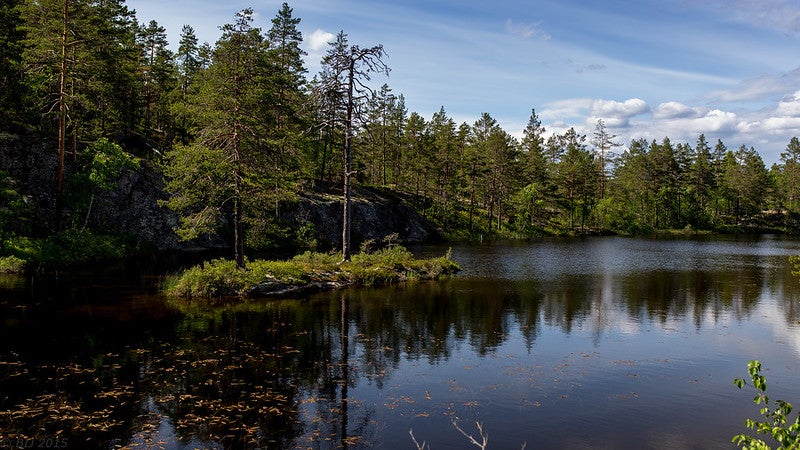
Excess nutrients in lakes can lead to unsightly algal blooms, turning water green and producing toxins that impact our water quality.
One excess nutrient, phosphorus, enters waterways from agricultural and urban areas and eventually settles in lake sediments. Here, it can cycle back into the water column or be stored in deeper sediment layers. But many lake water quality models do not adequately capture how nutrients cycle between these sediments and the water column.
Recent work by Igor Markelov, Raoul-Marie Couture, Rachele Fischer, Sigrid Haande and Philippe Van Cappellen merged two existing lake models to better understand processes that influence nutrient cycling between sediments and the water column.
This model was applied to Lake Vansjø, showing its ability to predict water quality variables over a long historical period. Then, they used this model to simulate how climate change and human impacts may influence water quality in the future. Specifically, they looked at impacts of rising air temperatures, changes in ice cover, and removing phosphorus inputs.
Their results highlight how important phosphorus accumulated in lake sediment, or legacy phosphorus, can be in controlling phosphorus entering the water column. The model results suggest that remobilization of legacy phosphorus stored in sediments could sustain algal growth in the lake for hundreds of years.
Finally, they also looked at options for managing algal growth. Currently, many management practices focus on reducing external phosphorus loads. But this work shows that focusing on legacy phosphorus in sediments may be another important management route, particularly in lakes where internal phosphorus loading is a major contributor to phosphorus in the water column. Along this path, the group investigated the effectiveness of iron additions in limiting algal growth, by decreasing dissolved phosphorus fluxes from lake sediments.
This work has been featured in an EOS research spotlight.
Markelov, I., Couture, RM., Fischer, R., Haande, S., and Van Cappellen, P. 2019. Coupling Water Column and Sediment Biogeochemical Dynamics: Modeling Internal Phosphorus Loading, Climate Change Responses, and Mitigation Measures in Lake Vansjø, Norway. Journal of Geophysical Research: Biogeosciences. https://doi.org/10.1029/2019JG005254